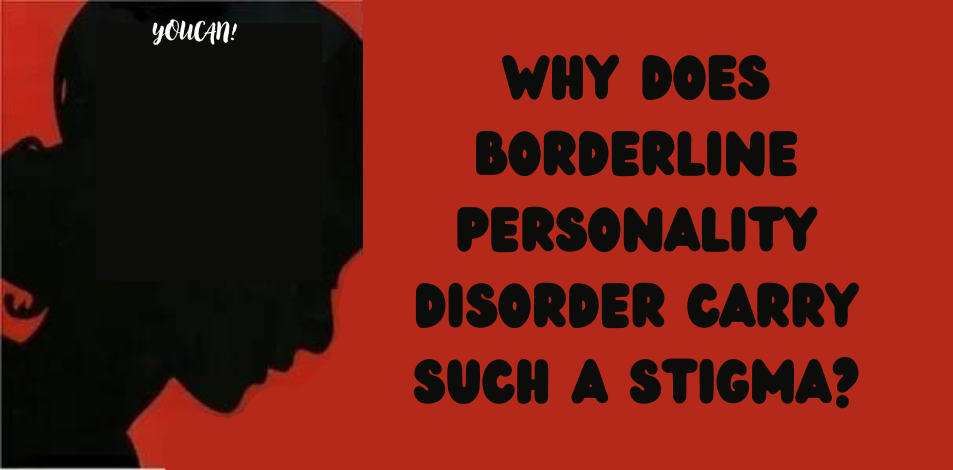
Borderline Personality Disorder (BPD) is one of the most misunderstood and stigmatized mental health conditions. Despite increased awareness and efforts to destigmatize mental illness in general, BPD continues to be viewed through a lens of judgment and bias. Understanding why BPD carries such a stigma requires examining the nature of the disorder itself, misconceptions about it, and the societal challenges surrounding mental health.
1. Misunderstanding of Symptoms
One of the main reasons BPD carries such a stigma is the nature of its symptoms. BPD is characterized by intense emotional instability, fear of abandonment, impulsivity, and difficulties in maintaining stable relationships. People with BPD may experience extreme emotional highs and lows, which can manifest in volatile or self-destructive behaviors, such as:
Mood swings and emotional dysregulation that can be difficult for others to understand or handle.
Fear of abandonment that may cause individuals to act in ways that seem irrational or overly clingy to outsiders.
Related : You Can End Your Borderline Personality Style
Impulsivity in areas like spending, substance use, or relationships that may be viewed as reckless.
Because BPD symptoms are often expressed in relational and emotional contexts, people may misinterpret them as deliberate, manipulative, or attention-seeking. This lack of understanding perpetuates the stigma, as those with BPD are seen as “too much to handle” rather than individuals struggling with a legitimate mental health disorder.
2. Labeling and Negative Media Representation
BPD is often portrayed in a negative light in media and popular culture, where people with the disorder are frequently depicted as dangerous, overly dramatic, or manipulative. This portrayal fosters fear and misunderstanding. For example, films and TV shows may exaggerate the intensity of BPD symptoms, leading viewers to associate the disorder with irrationality and danger.
Additionally, the label of “borderline personality disorder” itself contributes to stigma. Terms like “personality disorder” suggest that something is fundamentally wrong with an individual’s character, which can provoke judgment or fear. The word “borderline” historically suggested that the individual was on the “borderline” of psychosis, a term that no longer applies but continues to carry negative connotations.
As a result, many people with BPD avoid seeking treatment because of the fear of being labeled, reinforcing the stigma further.
3. Challenges for Healthcare Providers
Another factor contributing to BPD’s stigma is the complex relationship between patients with BPD and healthcare providers. Some therapists, psychiatrists, and mental health professionals view BPD as one of the more challenging disorders to treat. The emotional volatility and instability that can accompany the disorder may lead to difficult patient-provider relationships, with some professionals viewing patients with BPD as “difficult” or “manipulative.”
This perception has led to many individuals with BPD being unfairly treated or dismissed by the very systems designed to help them. When professionals harbor these biases, they may:
Avoid taking on patients with BPD.
Overlook the potential for successful treatment.
Use language that can be harmful or invalidating.
The stigma from within the healthcare community reinforces the negative narrative around BPD, making it harder for individuals to access the help they need.
4. Fear of Emotional Intensity
One of the most challenging aspects of BPD is the emotional intensity that sufferers experience. The fear of abandonment, rapidly shifting self-image, and sensitivity to rejection can make social interactions particularly difficult. This emotional intensity often scares or overwhelms those in close relationships, leading to isolation and misunderstanding.
Loved ones may feel ill-equipped to handle the ups and downs, leading to relationship breakdowns.
Society at large can view individuals with BPD as being too emotionally volatile, leading to their exclusion or marginalization.
Related : Borderline Personality Disorder: The Most Common Misdiagnosis
This fear of emotional extremes can also create a self-fulfilling cycle where individuals with BPD feel misunderstood or abandoned, which exacerbates their symptoms and reinforces the stigma surrounding the disorder.
5. Historical and Gender Biases
BPD has historically been diagnosed more frequently in women than in men, which has led to gendered stereotypes. Women with BPD are often unfairly labeled as “hysterical” or “overly emotional,” reinforcing harmful stereotypes about female behavior and mental health.
This gender bias has not only contributed to the stigma but has also led to misdiagnosis or underdiagnosis of BPD in men. When men do present with similar symptoms, they may be diagnosed with a different disorder, such as antisocial personality disorder or substance use disorder, further complicating the understanding and treatment of BPD.
Reducing the Stigma Around BPD
Despite the stigma, efforts are being made to improve public understanding and treatment of BPD. Mental health professionals are increasingly recognizing the importance of validating the experiences of those with BPD and providing evidence-based treatments, such as Dialectical Behavior Therapy (DBT), which has shown significant success in helping individuals manage their symptoms.
Public education about the realities of BPD, its treatability, and its impact on those who live with it is key to reducing the stigma. Compassion and empathy from loved ones, healthcare providers, and society at large are necessary to create a more supportive and inclusive environment for those with BPD.
In conclusion, BPD carries such a stigma because of the disorder’s misunderstood symptoms, negative media portrayals, challenges within the healthcare system, and societal fears of emotional intensity. Breaking down these barriers requires increased awareness, professional empathy, and a commitment to challenging harmful stereotypes.




